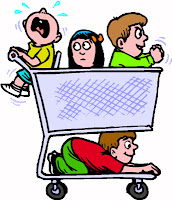Rythm, Rhyme, and Story
Keep in clear and equal focus
Keep in clear and equal focus
This is Max Tell with his 2nd installment of writing exercises for professional and beginning writers for kids.
Note: when referring to poems, I am also including songs. When referring to songs, I am usually focusing on the unique elements or qualities of songwriting.
True.
Even the simplest poem for kids depends on a strong coordination between rhythm, rhyme, and a solid story.
But you might say, "There are some great kids poems that don't rhyme."
Most un-rhymed poems are created with repetition in mind, thus creating rhyme through the repetition, for example, my poem for babies and toddlers, "Bug in My Hand".
There's a bug in my hand,
and it climbed on my nose,
and it played a bass drum,
bum, bum, bum, bum. (Repeat entire poem three times.)
I even suggest that "Bug in My Hand" be repeated six more time, three times making the bug bigger and bigger, and three more times making it smaller and smaller.
Rhythm is essential to the musicality of a poem. Do not confuse musicality with the boring singsong method many use when reading poetry. One should read a poem as if spoken, its musical quality hidden and acting as a foundation holding the poem together.
And when writing 'the story' of a poem, we want to think of unique ways of telling that story. Of gripping the reader's or listener's attention with new words and phrasing to tell it. And holding their attention to the end where we add a twist that brings the poem not only to a satisfactory close but a compelling one.
Rhythm, rhyme, or story can't stand alone. They build and depend on one another, as it were, for life itself. For if they do not work well together in partnership, a poem truly does die on the page.
Adding more devices such as metaphor, simile, assonance (the repetition of vowel sounds), or any combination of many other poetic devices, and your poems will ring in the ears and minds of readers and listener, gripping their attention, and carrying them to a strong and satisfying catharsis.
Use these devices sparingly yet with absolute control and fluidity and the final result will be far greater than the sum of their parts.
Note: If there were a few terms that you didn't understand in this post, don't worry about it. I will talk about them in detail later. Personally, though it is helpful to memorize the terms of poetic devices, their meanings are far more important.
Learn to love using the devices and the memorization of the words that name them will come a lot easier.
 |
| Shopping Cart |
Next topic: Rhythm.
What would you like to know more about? Rhythm? Rhyme? Anything of your choice? Do you have a question about poetry? Your comments would be greatly appreciated.
Bye for now and see you soon.
Have a great writing day.
Max
Have a great writing day.
Max
PS: Like writing, but love editing.



No comments:
Post a Comment